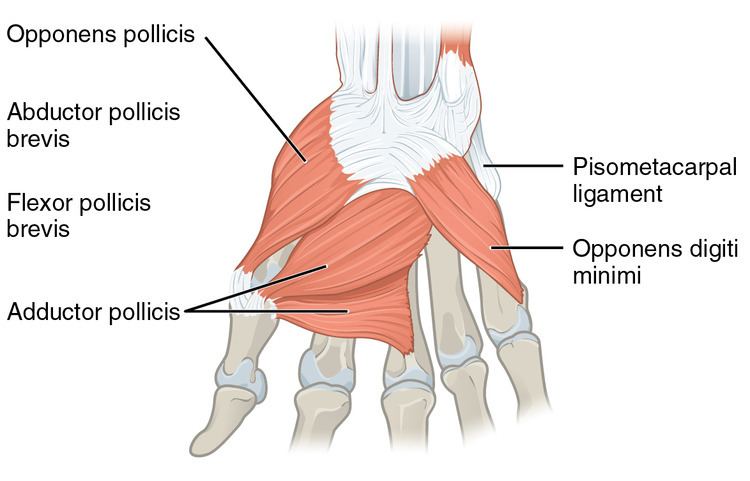 | ||
Actions Flexion of the thumb's metacarpal at the first carpometacarpal joint, which aids in opposition of the thumb Latin Musculus opponens pollicis | ||
The opponens pollicis is a small, triangular muscle in the hand, which functions to oppose the thumb. It is one of the three thenar muscles, lying deep to the abductor pollicis brevis and lateral to the flexor pollicis brevis.
Contents
Structure
The opponens pollicis originates from the flexor retinaculum of the hand and the tubercle of the trapezium. It passes downward and laterally, and is inserted into the whole length of the metacarpal bone of the thumb on its radial side.
Innervation
Like the other thenar muscles, the opponens pollicis is innervated by the recurrent branch of the median nerve.
Blood supply
The opponens pollicis receives its blood supply from the Superficial palmar arch.
Function
Opposition of the thumb is a combination of actions that allows the tip of the thumb to touch the tips of other fingers. The part of opposition that this muscle is responsible for is the flexion of the thumb's metacarpal at the first carpometacarpal joint. This specific action cups the palm. Many texts, for simplicity, use the term opposition to represent this component of true opposition. In order to truly oppose the thumb, the actions of a number of other muscles are needed at the thumb's metacarpophalangeal joint.
